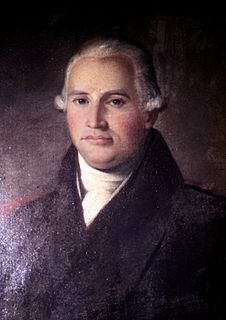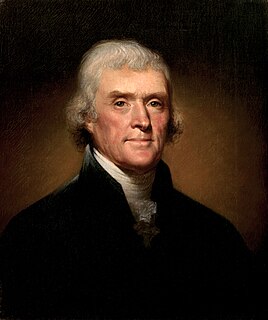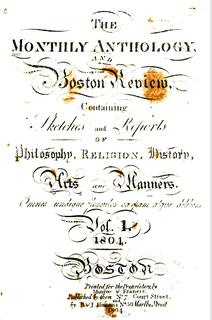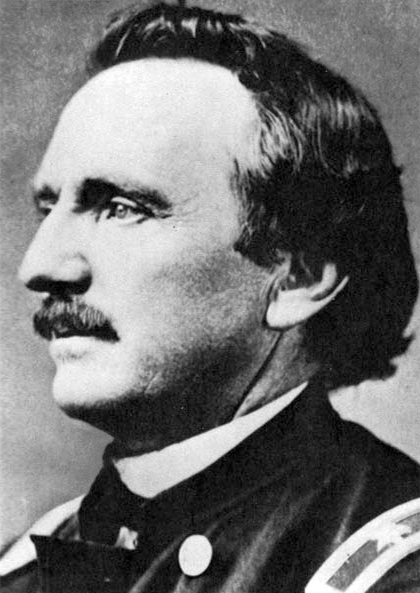 W
WThe Boston Weekly Magazine (1802–1808) of Boston, Massachusetts, was established by Gilbert & Dean in 1802, "devoted to morality, literature, biography, history, the fine arts, agriculture, &c. &c.". Joshua Belcher, Samuel T. Armstrong, Oliver C. Greenleaf, and Susanna Rowson were also affiliated with its production. The magazine ceased in 1808. The magazine was later published under the same name by David H. Ela and John B. Hall in 1840–41.
 W
WThe Constitutional Telegraphe (1799-1802) was a newspaper produced in Boston, Massachusetts, at the turn of the 19th century. The paper sympathized with the Democratic-Republican Party, and supported Thomas Jefferson. Publishers included Samuel S. Parker, Jonathan S. Copp, John S. Lillie, and John Mosely Dunham. The paper was originally called the Constitutional Telegraph. The "e" was added to Telegraphe with the 1 January 1800 issue. This issue included a new engraved masthead of an eagle and the motto "We advocate the rights of man."
 W
WWilliam Dunbar (1750–1810) was a Scottish merchant, plantation owner, naturalist, astronomer and explorer.
 W
WThe Great Falls of the Missouri River are a series of waterfalls on the upper Missouri River in north-central Montana in the United States. From upstream to downstream, the five falls along a 10-mile (16 km) segment of the river are:Black Eagle Falls Colter Falls Rainbow Falls Crooked Falls, also known as Horseshoe Falls Big Falls, also known as the Great Falls,
 W
WGeorge Washington, elected the first president in 1789, worked with the heads of the departments of State, Treasury, and War, along with an Attorney General, the group of which later became known as his cabinet. Based in New York, the new government acted quickly to rebuild the nation's financial structure. Enacting the program of Treasury Secretary Alexander Hamilton, the government assumed the Revolutionary War debts of the states and the national government, and refinanced them with new federal bonds. It paid for the program through new tariffs and taxes; the tax on whiskey led to a revolt in the west; Washington raised an army and suppressed it. The nation adopted a Bill of Rights as 10 amendments to the new constitution. Fleshing out the Constitution's specification of the judiciary as capped by a Supreme Court, the Judiciary Act of 1789 established the entire federal judiciary. The Supreme Court became important under the leadership of Chief Justice John Marshall (1801–1835), a federalist and nationalist who built a strong Supreme Court and strengthened the national government.
 W
WJeffersonian democracy, named after its advocate Thomas Jefferson, was one of two dominant political outlooks and movements in the United States from the 1790s to the 1820s. The Jeffersonians were deeply committed to American republicanism, which meant opposition to what they considered to be artificial aristocracy, opposition to corruption, and insistence on virtue, with a priority for the "yeoman farmer", "planters", and the "plain folk". They were antagonistic to the aristocratic elitism of merchants, bankers, and manufacturers, distrusted factory workers, and were on the watch for supporters of the Westminster system.
 W
WThe Lewis and Clark Expedition from August 31, 1803, to September 25, 1806, also known as the Corps of Discovery Expedition, was the United States expedition to cross the newly acquired western portion of the country after the Louisiana Purchase. The Corps of Discovery was a select group of U.S. Army and civilian volunteers under the command of Captain Meriwether Lewis and his close friend Second Lieutenant William Clark. The expedition made its way westward, and crossed the Continental Divide of the Americas before reaching the Pacific Coast.
 W
WThe Territory of Louisiana or Louisiana Territory was an organized incorporated territory of the United States that existed from July 4, 1805, until June 4, 1812, when it was renamed the Missouri Territory. The territory was formed out of the District of Louisiana, which consisted of the portion of the Louisiana Purchase north of the 33rd parallel.
 W
WThe Market Museum (1804-1822) of Boston, Massachusetts, was located in Market Square, adjacent to Faneuil Hall. Phillip Woods directed the enterprise. Also called the Boston Museum, it featured displays of "wax figures, pictures, natural and fanciful curiosities -- such as have not been exhibited in this town before" and was "opened for the inspection of the public every day, from 9 o'clock in the morning until 9 in the evening."
 W
WThe Monthly Anthology and Boston Review was a miscellaneous magazine published by the Anthology Club of Boston, Massachusetts from 1804–1811. The more famous North American Review is generally considered to be its successor.
 W
WThe presidency of James Madison began on March 4, 1809, when James Madison was inaugurated as President of the United States, and ended on March 4, 1817. Madison, the fourth United States president, took office after defeating Federalist Charles Cotesworth Pinckney decisively in the 1808 presidential election. He was re-elected four years later, defeating DeWitt Clinton in the 1812 election. His presidency was dominated by the War of 1812 with Britain. Madison was succeeded by Secretary of State James Monroe, a fellow member of the Democratic-Republican Party.
 W
WThe presidency of James Monroe began on March 4, 1817, when James Monroe was inaugurated as President of the United States, and ended on March 4, 1825. Monroe, the fifth United States president, took office after winning the 1816 presidential election by an overwhelming margin over Federalist Rufus King. This election was the last in which the Federalists fielded a presidential candidate, and Monroe was unopposed in the 1820 presidential election. A member of the Democratic-Republican Party, Monroe was succeeded by Secretary of State John Quincy Adams.
 W
WThe presidency of John Adams, began on March 4, 1797, when John Adams was inaugurated as the second President of the United States, and ended on March 4, 1801. Adams, who had served as vice president under George Washington, took office as president after winning the 1796 presidential election. The only member of the Federalist Party to ever serve as president, his presidency ended after a single term following his defeat in the 1800 presidential election. He was succeeded by Thomas Jefferson of the Democratic-Republican Party.
 W
WThe presidency of Thomas Jefferson began on March 4, 1801, when he was inaugurated as the third President of the United States, and ended on March 4, 1809. Jefferson assumed the office after defeating incumbent President John Adams in the 1800 presidential election. The election was a political realignment in which the Democratic-Republican Party swept the Federalist Party out of power, ushering in a generation of Democratic-Republican dominance in American politics. After serving two terms, Jefferson was succeeded by Secretary of State James Madison, also of the Democratic-Republican Party.
 W
WThe Raynolds Expedition was a United States Army exploring and mapping expedition intended to map the unexplored territory between Fort Pierre, Dakota Territory and the headwaters of the Yellowstone River. The expedition was led by topographical engineer Captain William F. Raynolds.
 W
WThis section of the Timeline of United States history concerns events from 1790 to 1819.